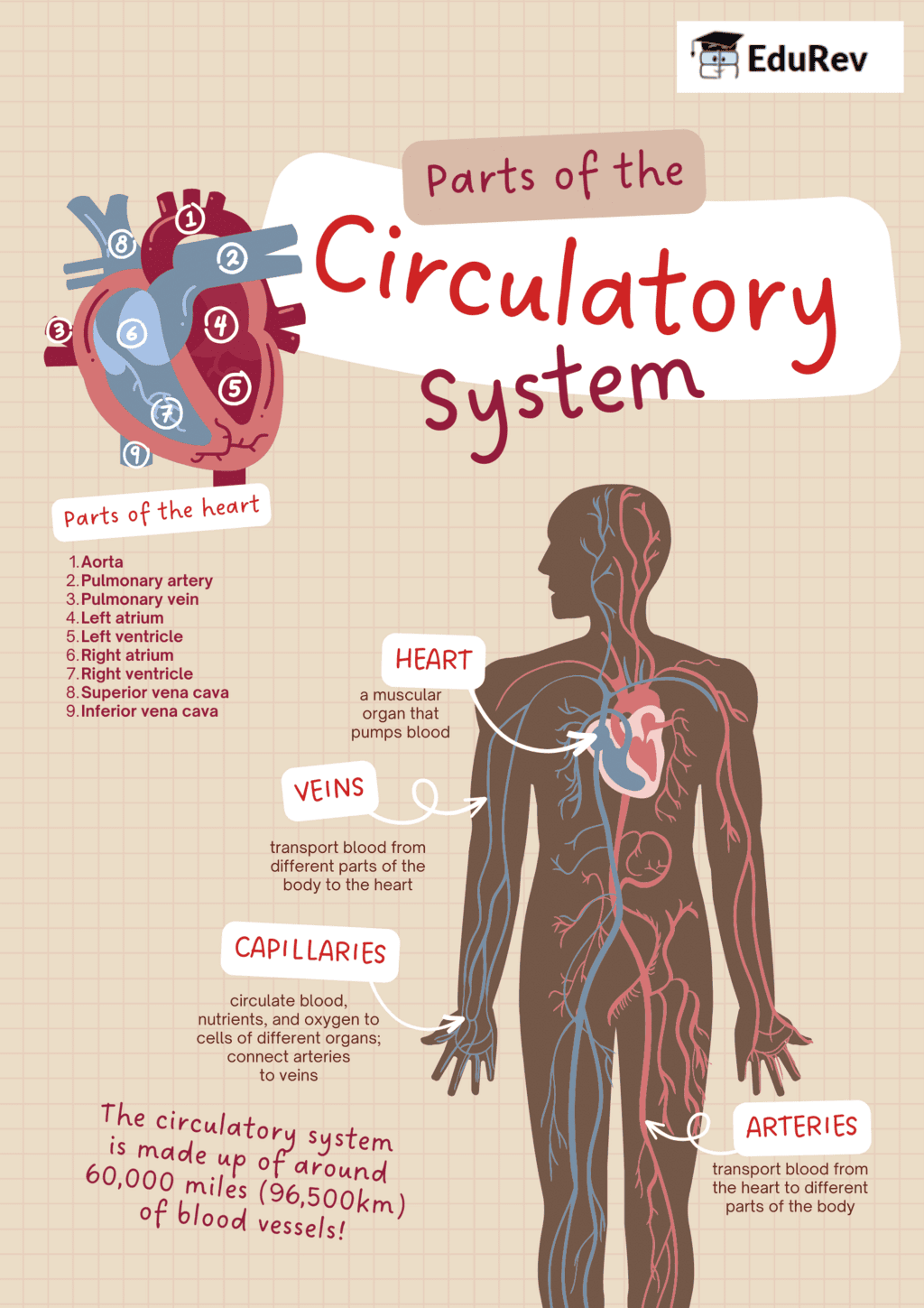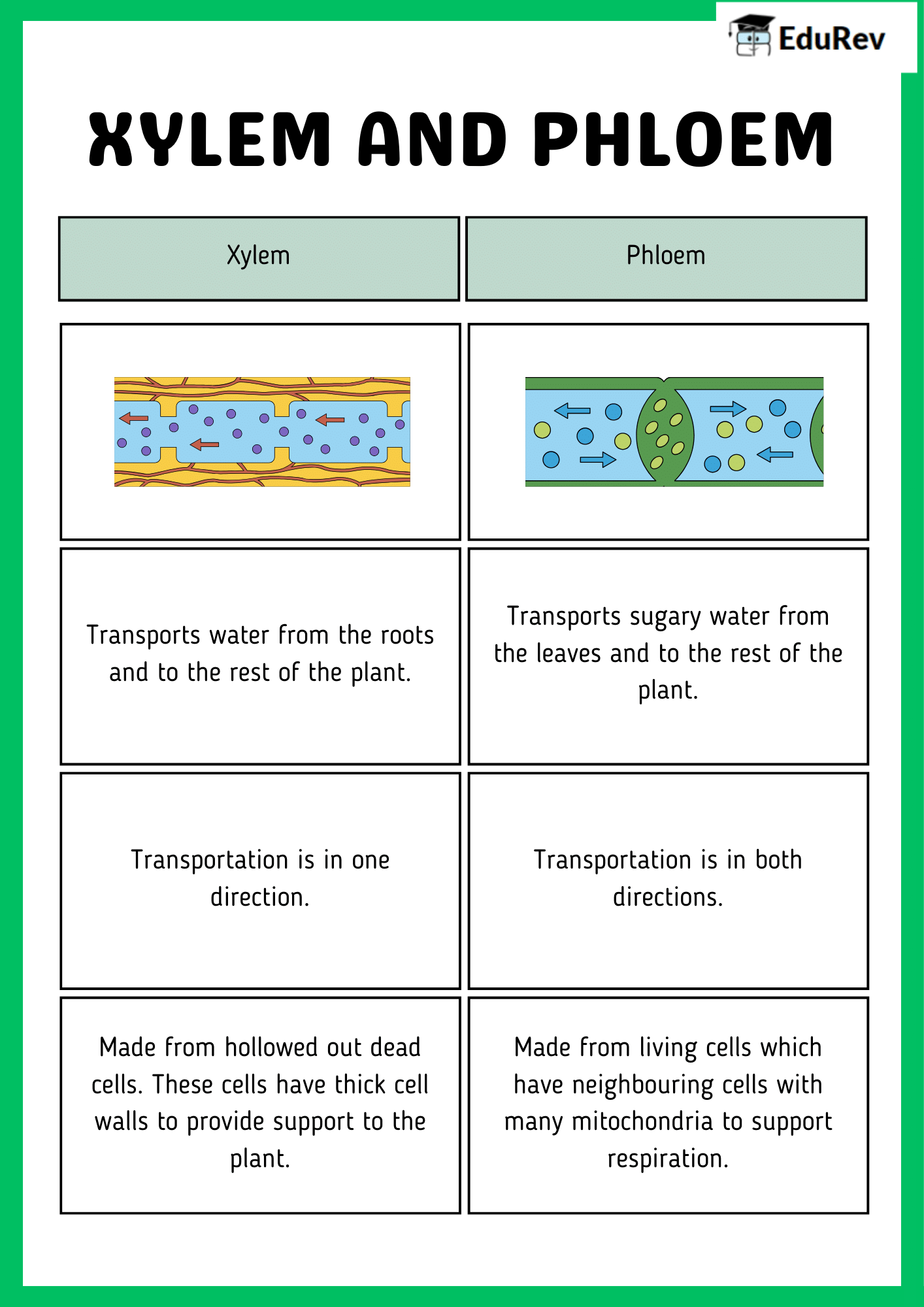Class 7 Exam > Class 7 Notes > Science Class 7 (Old NCERT) > Infographics: Transportation in Animals and Plants
Infographics: Transportation in Animals and Plants | Science Class 7 (Old NCERT) PDF Download


The document Infographics: Transportation in Animals and Plants | Science Class 7 (Old NCERT) is a part of the Class 7 Course Science Class 7 (Old NCERT).
All you need of Class 7 at this link: Class 7
|
112 videos|286 docs|28 tests
|
FAQs on Infographics: Transportation in Animals and Plants - Science Class 7 (Old NCERT)
| 1. What are the primary methods of transportation in animals? |  |
Ans. Animals primarily use two methods of transportation: locomotion and transport through body fluids. Locomotion can occur through walking, running, flying, or swimming, depending on the species. For instance, mammals and birds typically move on land or in the air, while fish and amphibians are adapted for aquatic environments. Transport through body fluids involves the movement of nutrients, gases, and waste products via the circulatory system, which is crucial for maintaining homeostasis.
| 2. How do plants transport water and nutrients? |  |
Ans. Plants transport water and nutrients primarily through two systems: the xylem and phloem. The xylem is responsible for moving water and dissolved minerals from the roots to the leaves, while the phloem transports sugars and other organic compounds from the leaves to different parts of the plant. This transportation system is vital for plant growth and survival, as it facilitates the distribution of essential resources.
| 3. What adaptations do animals have for transportation? |  |
Ans. Animals have developed various adaptations for efficient transportation, including specialized limbs, wings, fins, and body shapes. For example, birds possess lightweight bones and wings that allow for flight, while fish have streamlined bodies and fins that enable swift swimming. Additionally, some animals have evolved unique locomotion methods, such as slithering or hopping, to navigate their environments effectively.
| 4. Why is transportation important for both animals and plants? |  |
Ans. Transportation is crucial for both animals and plants as it ensures the distribution of essential resources such as nutrients, gases, and energy. For animals, efficient transportation allows for movement to find food, mates, and shelter, as well as the removal of waste products. In plants, effective transportation systems are necessary for growth, reproduction, and overall survival, as they enable the movement of water, nutrients, and sugars throughout the organism.
| 5. How do environmental factors affect transportation in plants and animals? |  |
Ans. Environmental factors such as temperature, humidity, and availability of resources can significantly impact transportation in both plants and animals. For instance, higher temperatures can increase the rate of transpiration in plants, affecting water transport. In animals, changes in habitat can influence mobility and migration patterns, as well as the efficiency of their circulatory systems. Understanding these effects is essential for studying ecosystems and the adaptability of organisms.
Related Searches
















